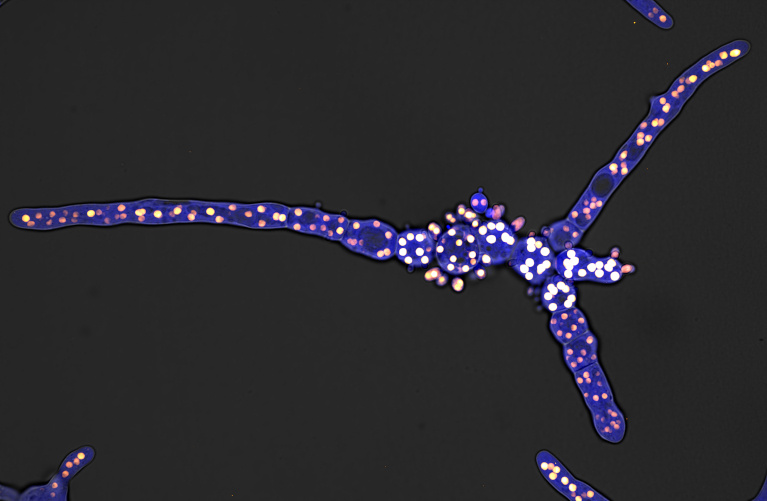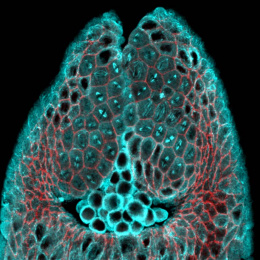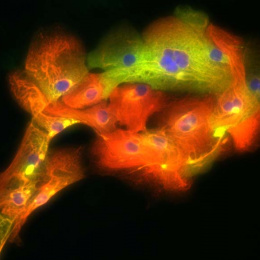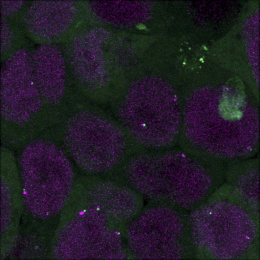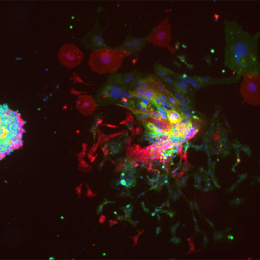Impressive Plasticity of A. pullulans in Cell Volume 1
Impressive Plasticity of A. pullulans in Cell Volume 1
Alison C. E. Wirshing
MIT Department of Biology
This image is of an unusual fungus, Aureobasidium pullulans, that can grow in multiple different shapes and sizes. Shown is the cell volume (blue) and the volume of each nucleus (orange). The nucleus holds the instructions for making each cell. This image was taken to measure how cells scale the number and size of their nuclei with the cell volume to address the question of how cells ensure they have enough nuclei to grow and divide.
This image was taken to understand nuclear and cytoplasmic scaling in the polymorphic fungus, Aureobasidium pullulans. This unusual fungus is capable of growing as a yeast (single cell) or a network of hyphae, and it can rapidly switch between these states. Here, we were measuring the nuclear (number and volume) to cytoplasmic ratio to understand how these cells adjust their nuclear contents to support growth of morphologically distinct cells spanning volume differences of more than an order of magnitude.
This polymorphic fungus is distinct from other yeast in that it produces multiple daughter cells in a single cell cycle. How A. pullulans partitions growth potential and each organelle between multiple daughter cells is an open question that cannot be explained by known biology in conventional yeast models. To address this, I am quantifying cytoskeletal organization and organelle inheritance. By visualizing the cytoskeleton, I can ask how the cytoskeleton is oriented to direct organelle trafficking and by tagging different organelles I can track delivery of organelles into each daughter
